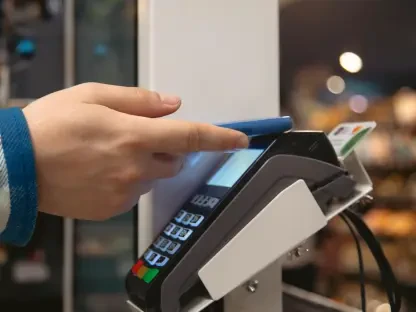The luxury ecommerce landscape is undergoing a seismic shift, with multi-brand platforms facing an existential crisis. This disruption is evident in recent events, such as the acquisition of Yoox Net-A-Porter (YNAP) by Mytheresa and the near collapse of Farfetch, followed by its rescue by Coupang. These incidents underscore the instability in this sector, highlighting the broader issues impacting multi-brand luxury ecommerce platforms. This article delves into the challenges and potential future of multi-brand luxury ecommerce platforms in the rapidly evolving digital marketplace.
The Rise of Direct-to-Consumer Strategies
Erosion of Unique Value Proposition
Luxury brands are increasingly adopting direct-to-consumer (DTC) strategies and enhancing their own ecommerce capabilities to maintain control over their brand image and customer relationships. This strategic pivot allows luxury houses to offer a broader range of products and create rich, brand-authentic experiences on their dedicated websites. Consequently, the unique value proposition of multi-brand platforms, which traditionally provided a curated selection of luxury brands in one place, is being significantly eroded. Brand websites now offer inspirational content, engaging brand stories, and sophisticated online experiences that multi-brand platforms struggle to replicate.
The shift towards DTC strategies by luxury brands is driven by several factors, including better control over pricing and inventory management, as well as the ability to collect and analyze customer data directly. This information enables brands to offer personalized experiences and targeted marketing, further enhancing customer loyalty. As a result, multi-brand platforms that once thrived on offering a diverse product range now find themselves at a disadvantage. They must grapple with the challenge of differentiating their offerings in a market where brand-owned platforms are increasingly able to deliver superior online shopping experiences.
Impact on Multi-Brand Platforms
With luxury consumers turning to brand-specific sites for a more immersive and personalized shopping experience, multi-brand platforms face a critical lack of differentiation. These platforms traditionally relied on the convenience of offering multiple brands under one roof, but as brands elevate their DTC capabilities, the need for multi-brand aggregators diminishes. This shift necessitates a reevaluation of their role in the luxury ecommerce landscape, compelling them to innovate and find new ways to attract and retain customers.
The growing dominance of DTC strategies also means that multi-brand platforms must work harder to maintain relevance. They need to focus on unique value propositions such as exclusive collaborations, personalized shopping experiences, and exceptional customer service. Additionally, the role of these platforms must evolve to one of complementing, rather than competing with, brand-owned channels. By doing so, multi-brand platforms can leverage their position to offer something that individual brand sites cannot—an unparalleled breadth of choice and discovery, especially for emerging and niche designers.
Operational and Financial Challenges
High Costs and Profitability Issues
Maintaining robust logistics and technology infrastructures represents a significant challenge for multi-brand luxury ecommerce platforms. These platforms need to invest heavily in warehousing, shipping, customer service, and technology to ensure a seamless shopping experience. These expenses add immense pressure on profitability, especially since luxury customers expect high standards of service and swift delivery. Additionally, customer acquisition costs are notably high in the competitive luxury sector and are often underestimated by these platforms, further exacerbating financial woes.
The high costs associated with running a multi-brand platform can lead to substantial financial strain, as evidenced by Richemont’s experience with YNAP. The company had to undertake significant financial write-downs and cash injections to keep YNAP operational. These financial challenges illustrate the difficulty of making multi-brand luxury ecommerce platforms profitable while maintaining the level of service that luxury consumers expect. The pressure to continually invest in technological upgrades and logistics infrastructure only adds to the financial burdens faced by these platforms, making it difficult to sustain long-term profitability.
Financial Instability
The financial instability of multi-brand platforms is evident in the recent near-collapse of Farfetch and its subsequent rescue by Coupang. Such incidents highlight the precarious nature of this sector and reflect broader issues impacting multi-brand luxury ecommerce platforms. The substantial financial losses experienced by Richemont with YNAP underscore the need for a strategic rethink to ensure sustainability and competitiveness in the face of growing DTC dominance.
To address financial instability, multi-brand platforms must explore new business models and revenue streams. This could involve diversifying their offerings to include services such as personalized styling advice, curated shopping experiences, and loyalty programs. Furthermore, leveraging technology to optimize operations and streamline logistics could help reduce costs and improve efficiency. While financial challenges remain significant, these platforms must innovate and adapt to remain viable in an increasingly competitive digital marketplace.
Shifting Consumer Behavior
Brand-Owned Digital Channels
Overarching trends in the luxury ecommerce landscape reveal a significant shift towards brand-owned digital channels as the primary sources of inspiration for luxury consumers. Major luxury brands have invested heavily in developing their online presence, providing direct engagement and a more authentic connection with their customers. This focus on brand-owned channels has diminished the discovery role that multi-brand platforms once played, posing a critical challenge for these platforms to articulate a compelling value proposition in the market.
The trend towards brand-owned digital channels is further fueled by the growing importance of social media in influencing consumer behavior. Luxury consumers now rely more on social media for inspiration and direct engagement with brands, making it crucial for multi-brand platforms to reevaluate their digital strategies. As luxury consumers increasingly turn to brand-specific sites for exclusive content and unique shopping experiences, multi-brand platforms must find innovative ways to maintain their relevance and attract a discerning audience seeking personalized and immersive online interactions.
The Role of Social Media
Social media platforms have become key players in the luxury ecommerce landscape, drastically altering how consumers discover and engage with luxury brands. Platforms like Instagram and TikTok serve as primary sources of inspiration, with influencers and brand collaborations driving consumer interest and purchases. This shift towards social media further diminishes the discovery role that multi-brand platforms once played, compelling them to find new ways to attract and retain customers who are increasingly guided by direct brand engagement online.
To adapt to this changing landscape, multi-brand luxury ecommerce platforms must leverage social media effectively to reach their target audience. This could involve partnering with influencers, creating engaging content, and utilizing data analytics to monitor consumer trends and preferences. By harnessing the power of social media, these platforms can enhance their visibility and maintain a connection with luxury consumers who are constantly seeking new and exclusive experiences. However, it is crucial for multi-brand platforms to offer something that sets them apart from brand-specific channels, such as unique collaborations or curated selections of niche designers.
Potential Avenues for Differentiation
Focusing on Curation and Discovery
To avoid becoming obsolete, multi-brand luxury ecommerce platforms must rapidly evolve and redefine their raison d’être. One potential avenue for differentiation is focusing on curation and discovery, particularly by showcasing emerging designers and niche brands that lack the resources to develop their own robust DTC operations. By positioning themselves as incubators and promoters of the next generation of luxury talent, multi-brand platforms can carve out a unique market niche that appeals to consumers seeking innovation and originality in their luxury purchases.
Emphasizing curation can help multi-brand platforms distinguish themselves from brand-specific sites, attracting consumers who value the expertise and unique perspective that these platforms can offer. They can leverage their broad reach to introduce customers to new designers and exclusive collections that are not available elsewhere. Additionally, hosting virtual events, fashion shows, and designer collaborations can enhance the platform’s appeal and create a sense of community among luxury enthusiasts. By evolving into destinations for discovery and inspiration, multi-brand platforms can maintain their relevance and draw in a loyal customer base.
Enhanced Services and Personalization
Offering enhanced services such as personalized styling, seamless cross-brand shopping experiences, and superior customer service could create a compelling reason for consumers to choose multi-brand platforms over individual brand websites. These value-added services can significantly enhance the shopping experience and provide a level of attention and care that is often unmatched by brand-specific sites. Leveraging technology innovations like AI and data analytics to provide unparalleled personalization and shopping experiences could set multi-brand platforms apart by offering cross-brand insights and recommendations based on a comprehensive view of customer preferences.
Implementing advanced personalization techniques can help multi-brand platforms understand and anticipate customer needs, tailoring the shopping experience to individual preferences. This could involve offering customized product recommendations, virtual try-ons, and exclusive previews of upcoming collections. By utilizing data analytics, multi-brand platforms can gain valuable insights into consumer behavior and trends, allowing them to refine their offerings and marketing strategies. Ultimately, the ability to deliver a highly personalized and seamless shopping experience can set multi-brand luxury ecommerce platforms apart from brand-specific sites and build lasting customer loyalty.
Strategic Partnerships and Exclusive Offerings
Collaborations with Luxury Brands
Strategic partnerships with luxury brands to offer exclusive collections or experiences not available on brand websites could help multi-brand platforms remain relevant. By positioning themselves as complementary to brand DTC efforts rather than direct competitors, these platforms may find a sustainable path forward. Collaborations can provide unique value to consumers, enhancing the appeal of multi-brand platforms and fostering a sense of exclusivity and excitement around their offerings.
These collaborations can extend beyond just product launches, encompassing exclusive events, pop-up stores, and virtual experiences that create buzz and attract a luxury clientele. By working closely with luxury brands, multi-brand platforms can ensure that their offerings are unique and differentiated from what consumers can find on brand-owned channels. This symbiotic relationship can benefit both parties, with brands gaining access to a broader audience and multi-brand platforms enhancing their value proposition through exclusive and limited-edition products.
Exclusive Collections and Experiences
Offering exclusive collections and experiences not available on brand websites can differentiate multi-brand platforms from their competition. These exclusive offerings can attract luxury consumers seeking unique and limited-edition products, providing a compelling reason to shop on multi-brand platforms. By curating and showcasing exclusive collaborations with renowned designers or emerging talents, these platforms can create a sense of allure and exclusivity that is highly appealing to luxury consumers.
Moreover, multi-brand platforms can enhance their appeal by offering immersive and personalized experiences that go beyond traditional online shopping. This could involve virtual styling sessions, personalized recommendations, and curated shopping experiences tailored to individual tastes. Exclusive access to private sales, limited-edition drops, and behind-the-scenes content can also add value and foster a sense of loyalty among luxury shoppers. By continuously innovating and offering unique experiences, multi-brand platforms can stay ahead of the competition and retain their relevance in the dynamic luxury ecommerce landscape.
The Urgency for Adaptation and Innovation
Embracing Radical Transformation
The challenges for multi-brand luxury ecommerce platforms are significant, necessitating a radical transformation to survive. Embracing a new role in curating and promoting emerging designers, investing in superior service offerings, leveraging advanced technologies for personalization, and forming strategic partnerships are essential steps. These platforms must provide genuine, irreplaceable value in the luxury shopping journey to remain relevant. The need to navigate these seismic shifts in the luxury ecommerce landscape is urgent, and platforms must act swiftly to redefine their value proposition and stand out in a crowded market.
For multi-brand platforms to thrive, they must be willing to take bold steps and embrace innovation. This could involve rethinking their business models, incorporating cutting-edge technologies, and investing in unique content and experiences. By fostering a culture of creativity and adaptability, multi-brand platforms can stay ahead of industry trends and meet the evolving needs of luxury consumers. It is essential for these platforms to continuously explore new opportunities and challenges, ensuring that they remain dynamic and responsive in an ever-changing digital marketplace.
Innovating for the Future
The luxury ecommerce sector is experiencing a significant transformation, with multi-brand platforms confronting serious challenges. Recent developments like Mytheresa’s acquisition of Yoox Net-A-Porter (YNAP) and the near downfall of Farfetch, only to be rescued by Coupang, illustrate the volatility within this market. Such events emphasize the precarious state of multi-brand luxury ecommerce, shedding light on the broader issues these platforms face. As the digital marketplace evolves rapidly, it’s crucial to understand the hurdles and potential futures for these multi-brand luxury platforms. The complexity of maintaining a competitive edge amidst fierce competition and the ever-changing consumer behavior creates a dynamic that few can navigate successfully. The industry is witnessing a paradigm shift, where adaptability, innovation, and resilience will likely determine which players thrive and which struggle. This article explores these challenges, presenting a detailed look into what lies ahead for multi-brand luxury ecommerce in this digital age, emphasizing the critical factors that will drive its success or failure.









